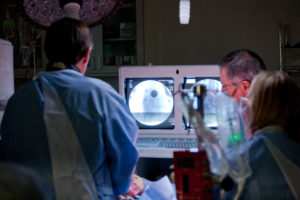In part 1 of our 2023 State of Medtech Design and Development Report we discussed sensors, AI and the paradigm shift in regulatory strategy.
Here in part 2, we dive into a persistent need for gap analysis, the importance of focusing on the unmet clinical need, the challenges of manufacturing at scale and investigate interesting investment opportunities for “orphan technologies” and ways for R&D to keep projects alive as budgets tighten.
What have been the most significant changes with potential to impact medtech innovation from a design and development perspective in the past 12 months? What do innovators need to know? What might the future hold for technologies with investment ‘behind’ them at high risk of succumbing to the medtech valley of death? Read on.
Absence of early ‘gap analysis’ compounds timeline struggles as tech races forward
“It’s frustrating to have so many new or prospective clients continuing to come to us in dire need of a strong gap analysis because they didn’t discover us much earlier in their endeavors,” GCMI Medical Director Emily Blum, MD, says. “So many of these projects would be much farther down the road towards commercialization if we had started with them at Phase Zero instead of working backwards.”
This is easily exacerbated by the speed at which new technologies manifest and the rigor with which those technologies must integrate into new medical tools or devices.
Starting with the unmet clinical need, not the technology, wins.
Researchers and investigators quickly become frustrated when they learn they must have objective market analysis and proof of clinical need, in a human-centered focus instead of an interesting technology trying to shoehorn itself into a medtech application. Moreover, the level of detail, the amount of paperwork and the rigors of risk analysis is always a surprise to innovators venturing into medtech for the first time. They tend to discredit those levels and consider them silly or unnecessary. Michelle Lott’s 5 Stages of Regulatory Grief captures this sentiment well. https://leanraqa.com/about/
“Tech push” and laissez faire approaches to medtech innovation are almost always certain to fail.
“Specifically, failure mode and effects analysis is a discipline and requirement for new medical technologies because there are so many things that can go wrong, and have gone wrong, that put patient or user safety at risk,” GCMI Director of Design and Development Engineering Saylan Lukas says. “The mitigation of that risk is one of the primary reasons regulatory bodies exist.”
Beyond the requirements and rigors described above, regulators need to know not just how something is designed, but why it was designed that way to begin with.
 Manufacturing at scale is a different game for researchers
Manufacturing at scale is a different game for researchers
Manufacturing at scale, even a relatively small scale of 1,000 units, has tolerance requirements. In research mode, researchers and investigators frequently consider only the production of one device at nominal or target tolerances. Manufacturing at scale requires tolerances and satisfactory answers to failure modes that inform those tolerances. How low can one tolerance be before something breaks? How high can that tolerance be before the device becomes too heavy?
“I wish more novice medtech innovators appreciated the size of the gulf between proof of concept prototypes and thousands of individual units produced by a contract manufacturer for preclinical testing, clinical trials, and ultimately a clinician in a hospital treating patients with it,” Saylan said.
As R&D and venture funding ebbs, there may be promising, de-risked orphans up for adoption at pennies on the dollar
On August 13, 2023, Medcity News reported,
“Biotech startups raised $2.6 billion globally in the second quarter of this year, but that’s down nearly 46% compared to the same period last year, according to a report from Pitchbook. Capital is harder to find, and the report projects an uptick in M&A activity as companies run out of cash.
“Venture capital is available, but the trending numbers do not favor startups. Deal counts have plateaued and deal sizes are down from the recent peak in 2021. These market conditions are leading startups to change their strategies in order to make the money they have last longer, according to the second quarter Venture Monitor report from Pitchbook and the National Venture Capital Association (NVCA).”
Against this landscape, “We see companies continuing to pull back on R&D investments,” Emily says. “Those companies will be in jeopardy of being well behind when an economic upturn arrives and others are able to hit the ground running. If you’re going to pull back on R&D and cannot afford to keep an internal R&D operation running, outsource whatever you can to GCMI to keep your most promising project or projects moving forward, at any phase from feasibility through realization. Companies with more durable pipelines will be in a much more advantageous position when the market and the economy rebounds.”
Industry veteran Shyam Parekh, PhD, formerly Director of Strategy & Business Development with Avanos Medical told Write2Market’s Paul Snyder that fiscal austerity measures are impeding the ability of corporations to make long-term strategic investment decisions.
“However, we do have a unique window of opportunity for us to consider intellectual asset carve-outs to unlock business potential of currently stagnating assets within larger corporations,” Shyam wrote.
“Startups spinning out of university settings suffer from key gaps in the continuum of funding landscape. While very large corporations have continued their investments to build alliances with young companies and incubate the technologies under the investment vehicles they’ve built; the midsize medtech enterprises are rethinking their innovation pipeline.
 “While writing off R&D investments is generally preferred, I know companies have leveraged some alternative scenarios to externally incubate their own intellectual assets through creative deal structures like ‘off-Balance Sheet deals, Build to Buy arrangements.’ Blackstone Lifesciences Fund, for example, has done large deals for life sciences companies. While it is more work, I have worked through some of these scenarios to keep the options alive and enrich the innovation funnel.
“While writing off R&D investments is generally preferred, I know companies have leveraged some alternative scenarios to externally incubate their own intellectual assets through creative deal structures like ‘off-Balance Sheet deals, Build to Buy arrangements.’ Blackstone Lifesciences Fund, for example, has done large deals for life sciences companies. While it is more work, I have worked through some of these scenarios to keep the options alive and enrich the innovation funnel.
“There is still smart money around. So long as the technology ‘repurchase’ options are not restrictive for the investors, promising technologies at risk of abandonment can be nurtured to meet their next milestone. There is always risk, but it is not difficult to build in appropriate risk mitigation strategies and the expected IRR for the financial investors. So, with some additional effort, the sponsoring enterprise can continue to ‘de-risk’ certain expensive hurdles.
“I believe there is a great deal of ‘de-risked’ value available for highly discounted acquisition dollars and reasonable commercialization pathways forward. It is important to point out that the investment risk profile of such carve-outs are substantially lower once the capital is committed with the right management team with the right supporting external resources in place.”
Perhaps the time has also come to expand economic development and philanthropic investments into new life science and medical technologies through university endowments as Roopa Manathorrpi suggests via StatNews First Opinion.
“UCSF’s InVent Fund — short for Innovation Ventures — was the brainchild of Barry Selick, a biotech industry veteran who served several years as UCSF’s vice chancellor of business development, innovation, and partnerships. Selick saw the need to keep projects in-house longer to get greater returns for the university and the inventors, and to “de-risk” the projects so they would be attractive to investors.
“The projects are rigorously vetted by industry veterans, chief scientific officers, and company founders. The funding levels are typically around $500,000.
“The fund has received philanthropic support, which has enabled an extraordinary track record: Over the past three years, 18 projects have been funded with four exits (licensing or VC-backed start-up formation), including one project being part of Rezo Therapeutics, which raised $78 million in Series A funding.”
 GCMI follows a structured, phase-gated process that allows for a disciplined, capital-efficient medical technology design and product development approach that still leaves room for flexibility. Our team works with a variety of innovators: individual physicians, researchers and engineers, start-up companies, midsize medtech companies and publicly traded industry leaders.
GCMI follows a structured, phase-gated process that allows for a disciplined, capital-efficient medical technology design and product development approach that still leaves room for flexibility. Our team works with a variety of innovators: individual physicians, researchers and engineers, start-up companies, midsize medtech companies and publicly traded industry leaders.
If you are an innovator with what you believe could be a promising technology to address an unmet clinical care need, or if you are part of a larger enterprise’s medtech R&D function looking to keep promising projects alive, it’s never too early to get in touch.
Contact us via the form below.
